“Will my horse make it to Grand Prix?” It’s the million-dollar question. If breeders knew which horses would make it to Grand Prix and which were going to become international stars, then the breeders would all be home and hosed!
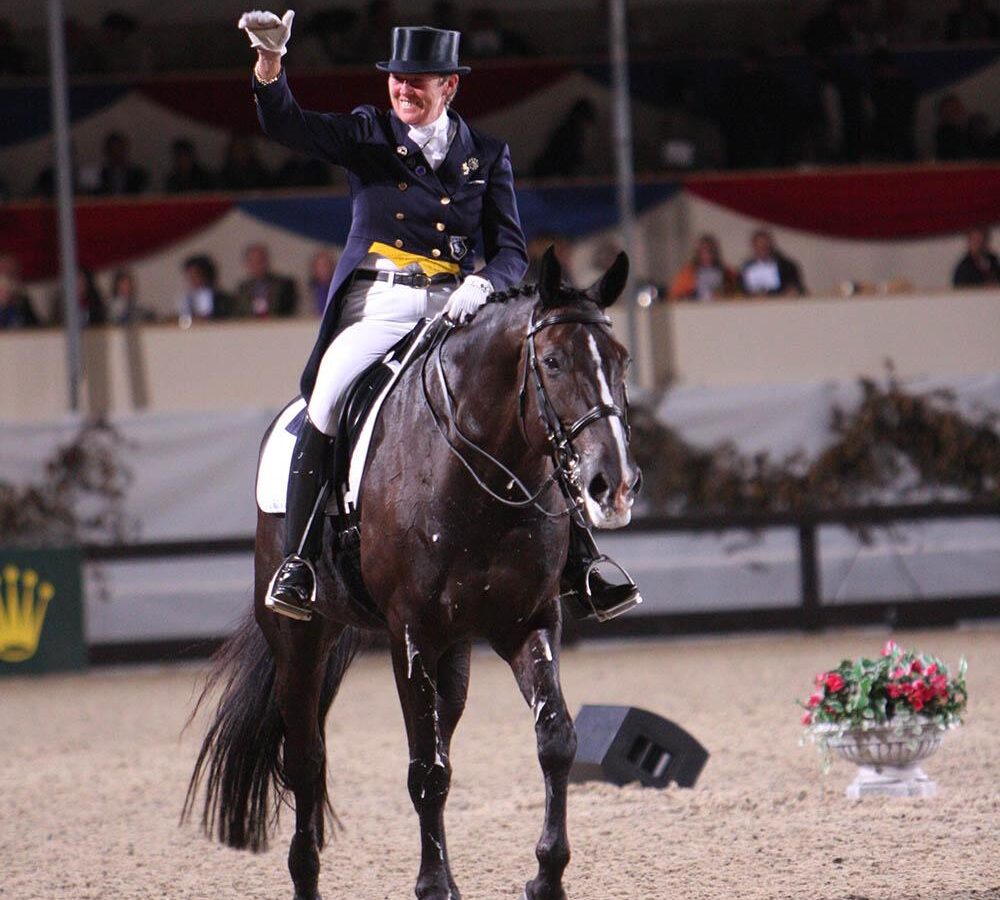
“From the first ride you
really will get a feeling.”
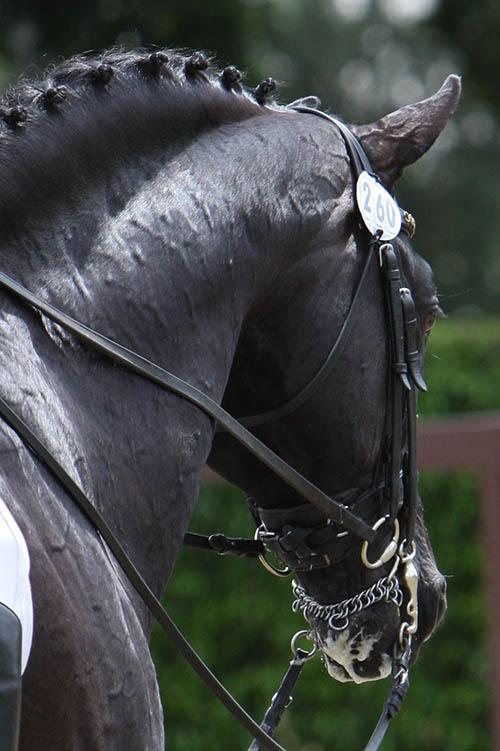
There are so many factors leading to picking and producing a Grand Prix horse, including:
- Temperament, trainability and attitude
- Good accepting contact
- Good physical and mental soundness
- A naturally uphill stature
- Three very clear paces
- An ability to collect
- Sharp reactions
- Natural balance
- ‘Look at me’ presence
- Good luck (and good management)
So, this is looking at a three-year-old horse that has just been broken in for a few weeks. It is being looked at with the view to competing in dressage and hopefully making it to Grand Prix.
The very first thing to know is what the horse needs to be able to do in a Grand Prix! If you are not a competent GP rider, then it’s best to take a very experienced and well-respected rider and coach along with you as they have seen many, many horses from this age through to GP. You can’t put a wise, experienced head on young shoulders. Experience bringing horses along to Grand Prix is of the utmost importance when wanting an eye in choosing a young horse.
For sure, everyone has thoughts about the attributes required and these ideas have been gathered from some wise and experienced people!
TEMPERAMENT, TRAINABILITY & ATTITUDE
You can have the most expensive horse, the best genetics and the most extravagant mover and looker, but if he doesn’t accept the discipline and want to work and have an aptitude for the requirements to be trained, then it’s going to be a hard road. Are they accepting of their environment, and the changing of surroundings, as well as the continuous varying distractions? And can they think about the rider when there are these changes taking place? It’s not that you want them to be brain dead and notice nothing, but the opposite really. You want them to be alert, yet able to concentrate on the rider and not be overwhelmed at the same time.
‘Quiet’ does absolutely not always mean good temperament and attitude. Actually, sometimes the opposite! A good FEI horse needs to be well and truly awake yet not hot and worried and unable to think. Keen and active is a good attribute in a young horse, but so long as the ears and the brain are still thinking about the person on top. Of course, look into the genetics and the parents and this will also give you a fairly decent idea about trainability and temperament.
From the first ride you really will get a feeling if they are on your side, and there needs to be this connection as it’s a team. Just because someone says the horse is great for you isn’t enough; you have to feel this. If there is no feeling of connection or friendship, then it will be hard to get to the top level. Sure, things change along the way but that feeling of graciousness is important.
A horse that has a good brain for the sport is of the utmost importance. They need to have an “off button”. The super highly-strung horses that wind themselves up are hard to deal with and much time is spent with them on the ground, so manners and a patient attitude are all-important. Mental soundness is a hugely important dynamic. Stress heads are their own worst enemies and not easy to cope with and are disappointing as their anxiety is upsetting, especially when they take time to accept a new arena and area.
GOOD ACCEPTING CONTACT
This is probably one of the biggest and most interesting attributes to a submissive horse. It is not proven, but it is for sure a connection to some degree in the acceptance of the bit from parents and their genetic makeup. A horse just broken-in will show greenness and inexperience for sure, but you can still feel the attitude to the contact. With training it will of course change, but that nice equal acceptance of the bit to hand is a real plus when working with a dressage horse.
Problems like very inconsistent contact, tongue issues, constant leaning, reefing, sitting way off or behind the contact and yawing and mouth opening are all traits that you would rather not start with. Of course, there are some problems that are manmade, for sure, but a lot is instinct and attitude from within the horse. There is nothing better than starting with a horse that has a good feeling to the contact.
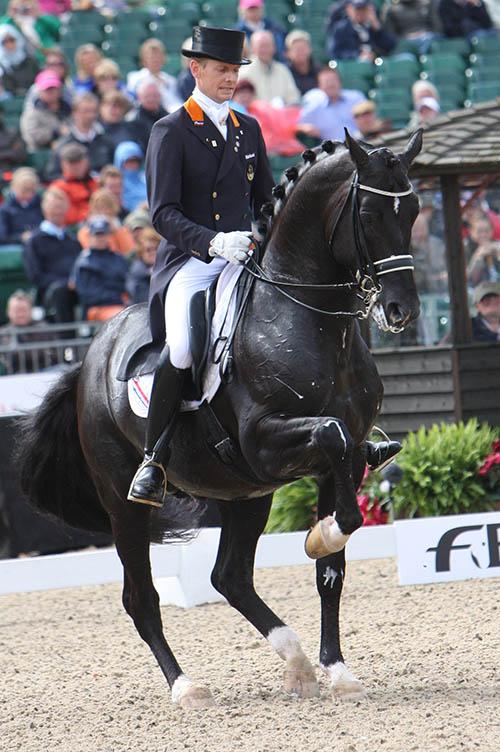
GOOD PHYSICAL SOUNDNESS
A Grand Prix horse needs to have great conformation that gives him the chance of staying sound for the duration of his campaign to Grand Prix. A really vitally important physical attribute is a good back and a comfortable one to carry the rider. Stiff-backed horses are not easy to make supple and are not easy to sit on. A good back is seriously important as this is where the weight of the rider is situated and a soft feel makes life as a rider so much better.
Another important attribute is good feet and straight front legs. Straight movement is very preferable, as when it gets to the lateral work and piaffe, paddling front legs can create balance and regularity problems. They say “no hoof, no horse”, so attention needs to really be paid to the well-balanced foot and then the correlation to the pastern angle and the balanced look of the leg when also viewed from the side. Joints and alignment of the body over the legs is all-important; well-balanced horse should not have the hind legs ‘camped out’, and instead should posses a powerful rump that looks strong to hold the weight on the hind legs with collection.
Weak hocks are a major no-no, as in dressage it’s all about the development of the carrying capacity on the hind end. The articulation in the hocks must be a major linchpin in the engagement, as the hocks are what determines the way to carrying. A good slope to the shoulder and a good set to the neck is important. Horses with very broad shoulders or that are wide behind will often find it hard to show great crossing in the lateral work — not always the case, but it needs to be checked out.
Even after a few weeks of riding, a horse should be able to make some leg-yield attempt and again a good test on mental and physical soundness. It may sound pedantic but a high tail-set that sits out from the rump does give an impression of a backend that isn’t lowering and it’s not helpful for the overall impression. A lower tail that hangs closer to the hocks is desirable to give that sitting look.
Of course, a vet check is all-important when you are looking for a horse for seven years down the track.
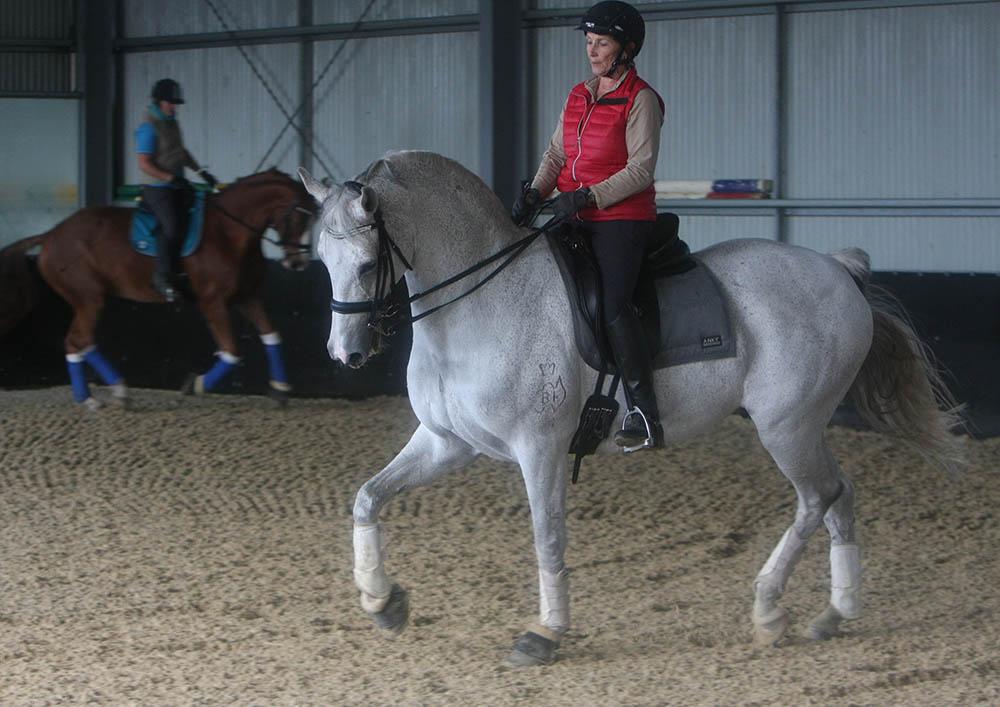
A NATURALLY UPHILL STATURE
A dressage horse needs to have an appearance of having a lower hind end than shoulders. Therefore, a horse that is built downhill with a low-set neck will be harder to give that elegant look. Long front legs are an advantage as they elevate that forehand from the beginning. For sure, at three they are often growing, but a rump that’s higher than the wither is not good. A well set-on neck makes all the work easier, so long as there is also a good, strong and stable (not weak and hollow) back, that goes with the uphill look. The whole uphill look is not just the poll high, but a well-balanced and strong uphill feeling from the back to the front with a neck that is rounded and not upside down with a developed under-neck!
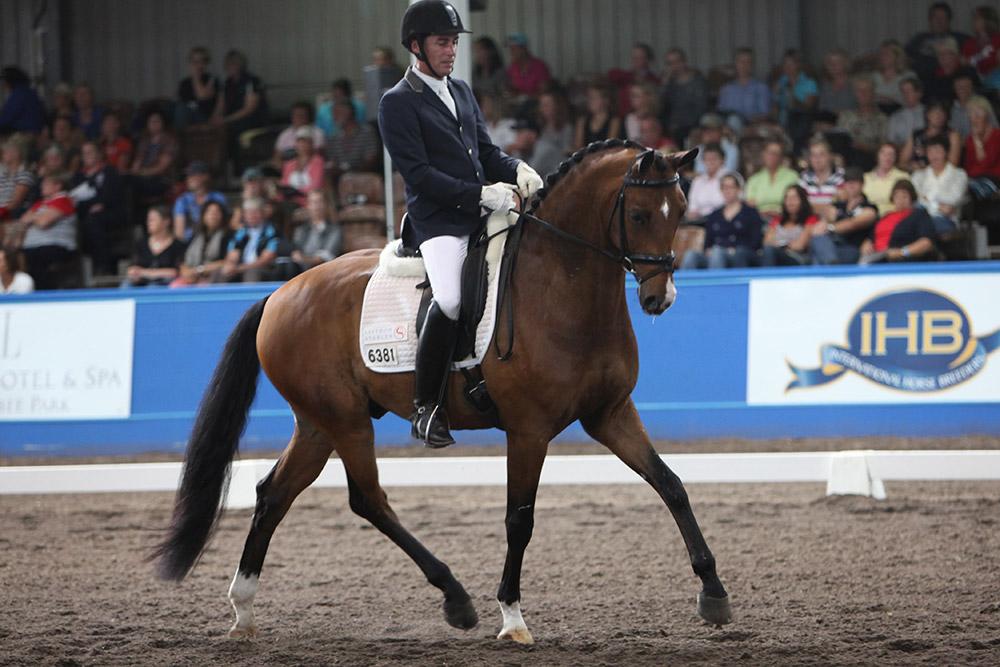
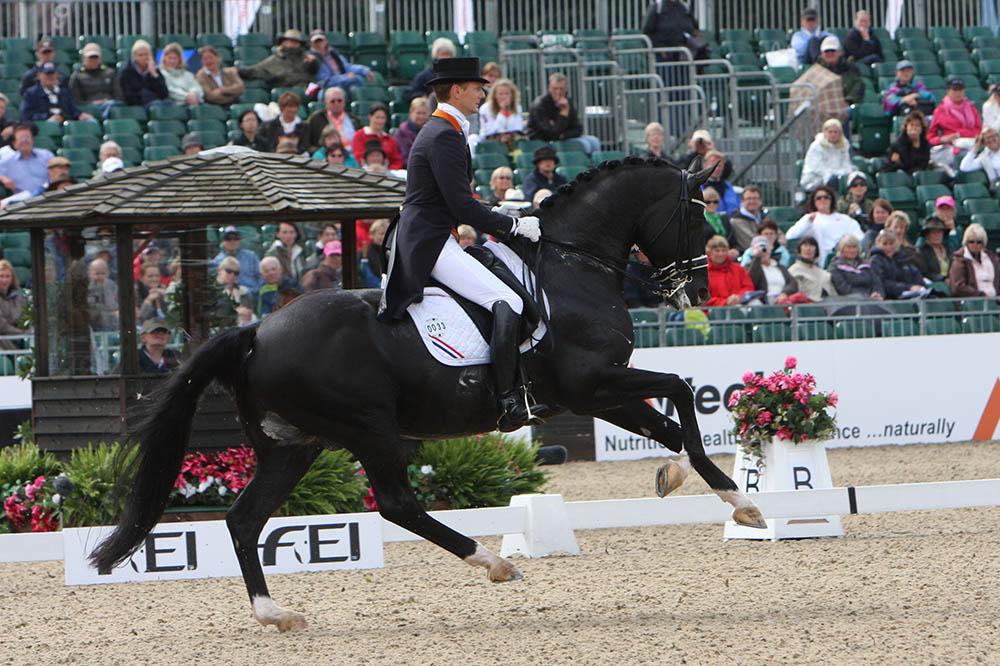
THREE VERY CLEAR PACES
There is no use having one outstanding pace and one that has a fault. This will not help. All paces must be clear and stable when shortened and elongated, even as a three-year-old. Remember that the canter is more important than the trot — in actual fact, when you get to Grand Prix the canter work is worth more than the trot.
The walk must have decent overtrack, as a led horse and under saddle, and when shortened (even at three) it must still remain clear and show no lateral tendency. The trot needs to have plenty of freedom of the shoulder and again a good overtrack in any lengthening. The trot must show ease and be fluent and very regular on small circles as well as straight lines. A trot that isn’t too straight-legged is good and a rounded stride with a bit of knee is desirable as this will make the piaffe and passage easier later. Remember, shortening the stride is more important in fact than lengthening.
All the same, a horse with an impulsive and forward-reaching trot is fabulous, and a forward-thinking instinctive attitude will really help. You do not want a young horse that you have to kick along all the time. A forward attitude is totally encouraged.
There is a huge importance put on a “good hind leg” — what is a good hind leg? For sure, it is an active one that does not drag the toe but… the hoof should not come higher than the front foot as this will show a downhill tendency. The hind leg should for sure be clean to the ground but not snappy and high — but it must step under the horse and must have a feeling of pushing and not trailing along out the back.
When a horse’s hind leg comes under and takes the weight and pushes, then the horse’s forehand can get lighter and show a higher, freer forearm and be truly elegant. The trot is for absolute sure one that can be improved with training and is a pace that needs to show a very positive rhythm and tempo. This regularity or metronomic look is a seriously good asset. When you ride the three-year-old, the trot should be easy to sit on. The back should suck you into the saddle and take you along.
When you really shorten the trot, it’s also nice to feel that the horse can get a little revvy and make shorter, quicker steps, as this will indicate a good chance for piaffe — but the horse that wants to get slow and too cadenced is not so easy to piaffe. The forward desire in the trot will help with the passage or more cadenced trot, and with an expert rider or great trainer on the ground they will be able to ascertain the ability to naturally have a tendency to piaffe and passage.
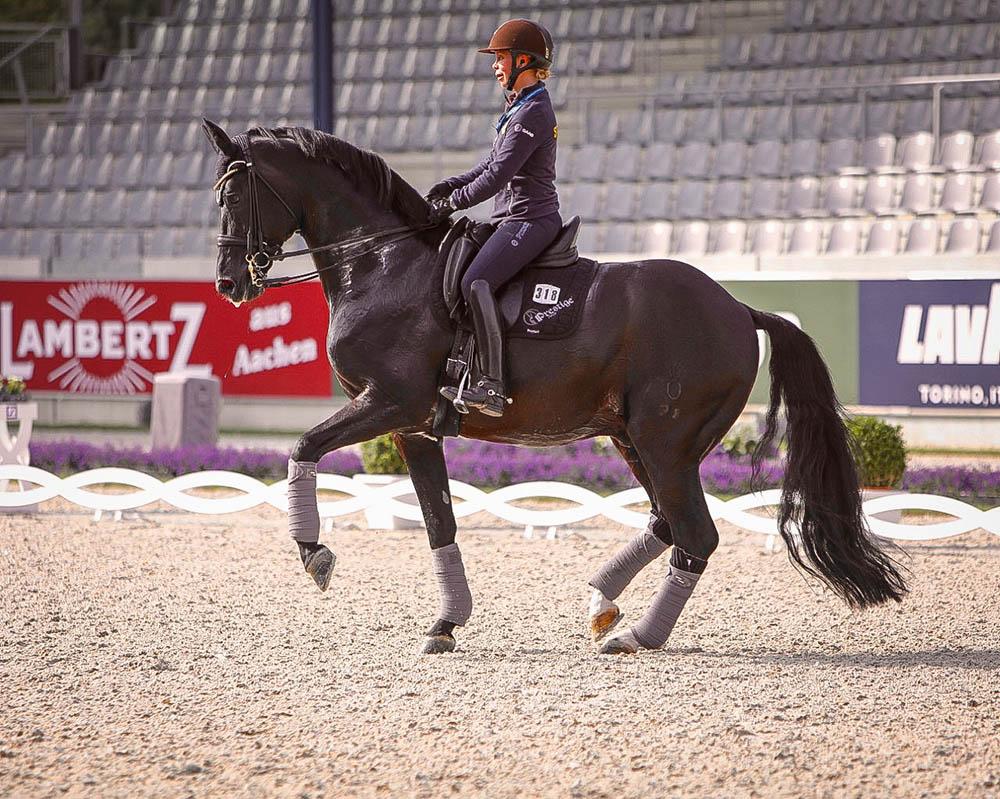
The canter should be bounding (cadenced) and forward, and again when you slow down it should not lose natural activity and the three-beat rhythm must remain. If it gets slow and lethargic, the chances are that the canter may well become four-beat and that’s a serious fault. It’s not that a three-year-old should be capable of proper collection, but you should feel that change within the pace.
When you ride the canter forward it should feel like the front legs are coming up and out, not down into the ground! It is essential to have the three paces in a positive, definite rhythm at all times and, as you see the shortening you should see a feeling of the hind end sitting. A mild look of the sliding halt!
AN ABILITY TO COLLECT
Collection is probably one of the biggest things that horses need in order to make Grand Prix level. Whether it’s canter pirouettes, piaffe, collected trot or collected canter, it’s the collection and ability to alter the strides and sit on the hind leg that is important.
You can spot an ability to collect from the very beginning with young horses galloping around the paddock. Collection doesn’t only mean collecting the strides and making the strides shorter and active, it also means to shorten the topline in a more rounded way so the nose comes more towards the chest and the forehead higher. This ability can often be seen with a young horse on the lunge; its ability to be able to shorten the strides, but still remain in rhythm.
When you first start lungeing, some horses have a very natural ability to put the hind legs under and carry the weight, and you’ll notice that more in downward transitions. Some will do that, rather than lean onto the forehand and stomp with their front legs. With training you are able to develop this of course, but it is something that’s a little instinctive.
One of the biggest things is that when you shorten the strides in the walk, it’s got to remain a clear four-beat rhythm and not become disrupted. So collected walk is very important.
Even though modern horses have a natural ability to take these very long strides — and it’s flashy and what everyone wants to see — there are only a couple of extended trots in the Grand Prix and there’s a whole lot more collection, so that collecting ability is of the utmost importance!
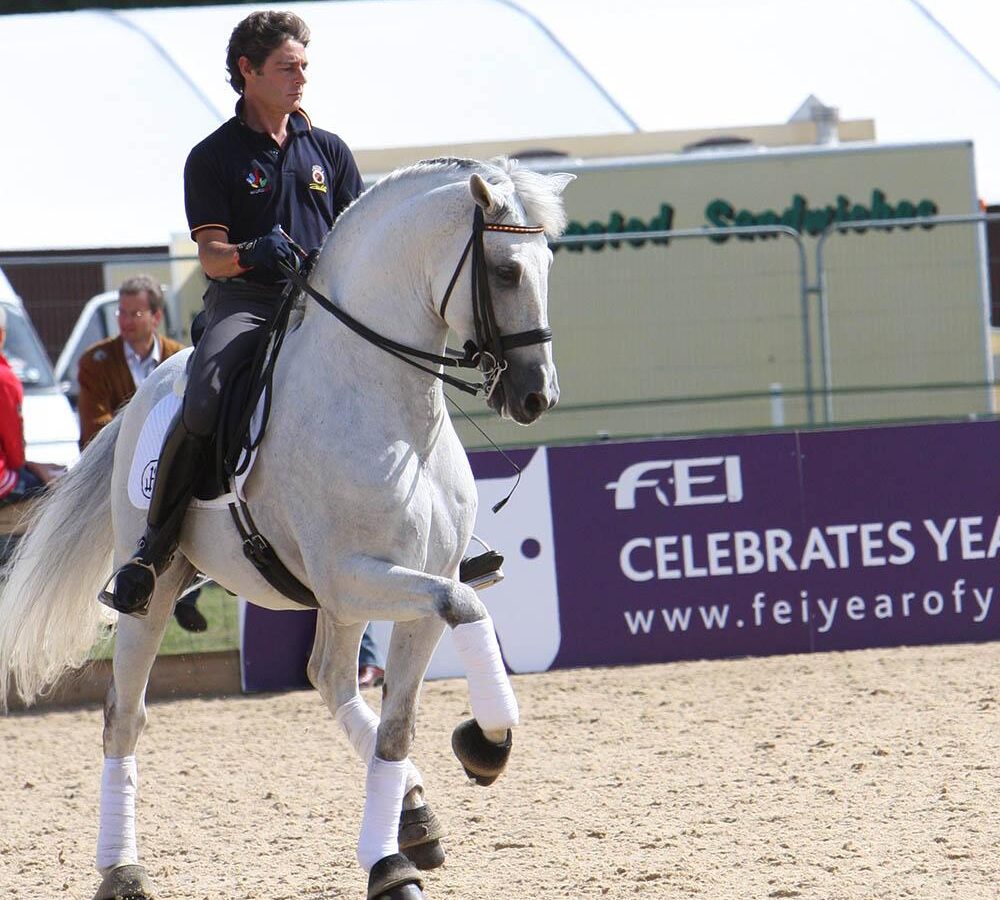
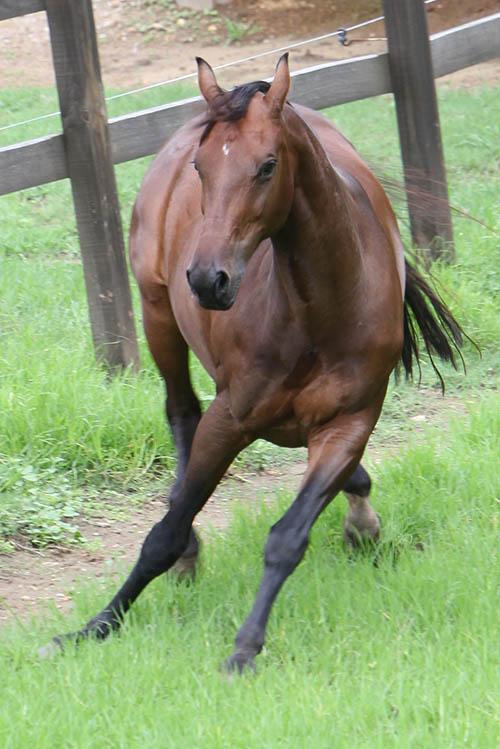
SHARP REACTIONS
Back in the day, Preliminary, Novice and Elementary horses were horses that plonked along in a very even rhythm and were very steady in the frame, almost to the point of leaning into the bridle with an open frame. However, dressage is about encouraging horses to move naturally in a collected way with natural energy, so a little sharpness and hotness — our breeding program comes from the thoroughbreds a lot — is very important to produce a Grand Prix horse.
Sure, you need to have them confident and relaxed, but you also need to have them very quick to react to your leg. Similar to when you see good sheepdogs working, when you tell them to stop, they stop in an instant, and they go in an instant; that’s not dissimilar to how you want your dressage horse to be, but at all times with that ability to be able to relax when you let the reins go.
Don’t make them dull to your leg, because the reactions that you need eventually in Grand Prix have to be very quick and sharp. A horse that’s sensitive — and that’s different to being a ‘stress head’ — is probably a better chance to get to Grand Prix than a horse that’s ignoring those outside influences with a tendency to be dull. You can always help them and train them to be a little quicker to your aids, but to have a sensitive horse to begin with is important.
NATURAL BALANCE
So, with your three-year-old, natural balance is an important thing. You can see natural balance with young horses in the paddock; they have the ability to buck and leap and bound and spin and turn and make flying changes. You can see whether the horses are naturally balanced or not.
If you see the young horse lunged in side reins or ridden, they shouldn’t rely on the reins or lean into the bridle to keep their balance. They should be perky and naturally balanced, and have the weight a little bit with the hind leg underneath, not with the hocks out behind the rump.
It’s usually the little, more sensitive types that have a better natural balance. You can tell as a three-year-old if the horse has natural balance; probably one of the easiest ways is if you’re cantering along and you make a turn from a small circle left to a small circle right without doing very much, if a horse is naturally balanced it will want to make a flying change rather than stay in counter-canter.
‘LOOK AT ME’ PRESENCE
‘Presence’ is not only the external, beautiful conformation and muscled way a dressage horse goes, but also the personality that is shown through facial expression via the eyes and ears. This doesn’t mean that they need to go with the ears pricked all the time; sometimes horses with ears pricked all the time are a little inattentive.
However, you need to have a partnership between the horse and the rider and the horse should want people to look at them. These types of horses are a little extroverted and they want to be the showman. It’s that personality that makes people want to look at that horse. For a Grand Prix horse, you need that ‘look at me’ feeling.
GOOD LUCK (& GOOD MANAGEMENT)
Always with any horse, you need a degree of luck, however, you make your own luck in the way you manage your horse’s regimen to the best of your ability. It’s not just about the training, and having your horse friendly with you — it’s also about keeping them sound, riding on good surfaces, keeping a good balanced way all the time, being consistent with work and not stressing them. And of course, it’s a lot to do with feeding, shoeing and other general care, and all those things that keep a horse healthy and happy.
By the same token, of course, you need luck on your side with competitions — from the draw to the weather, there are a million things that come into riding a horse that involve a little bit of good luck. However, good management leads to healthy, sound horses… and they tend to create their own good luck! EQ
YOU MIGHT ALSO LIKE TO READ BY ROGER FITZHARDINGE:
10 Tips for Riding the Preliminary Tests
10 Tips for Riding the Novice Tests
10 Tips for Riding the Elementary Tests
10 Tips for Riding the Medium Tests
10 Tips for Riding the Advanced Tests
10 Tips for Riding the Prix St Georges Test
10 Tips for Riding the Medium Tour Tests
10 Tips for Riding the Grand Prix Test









